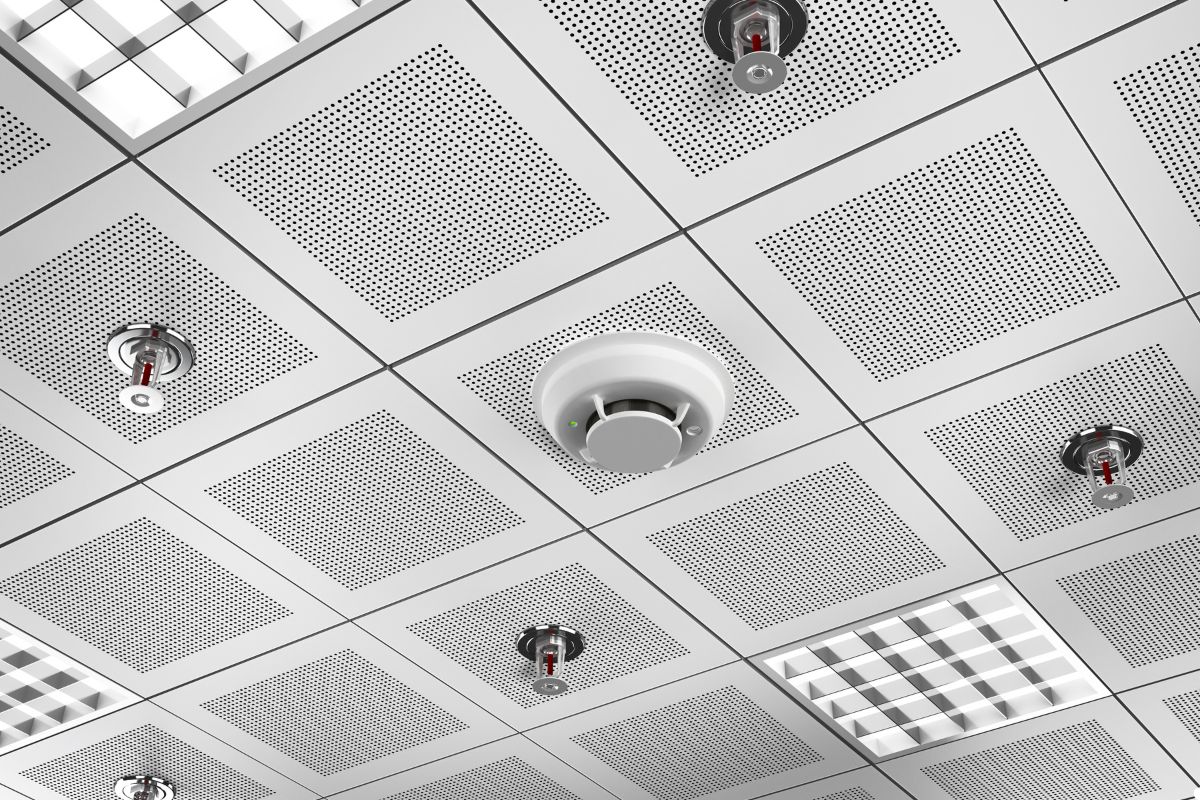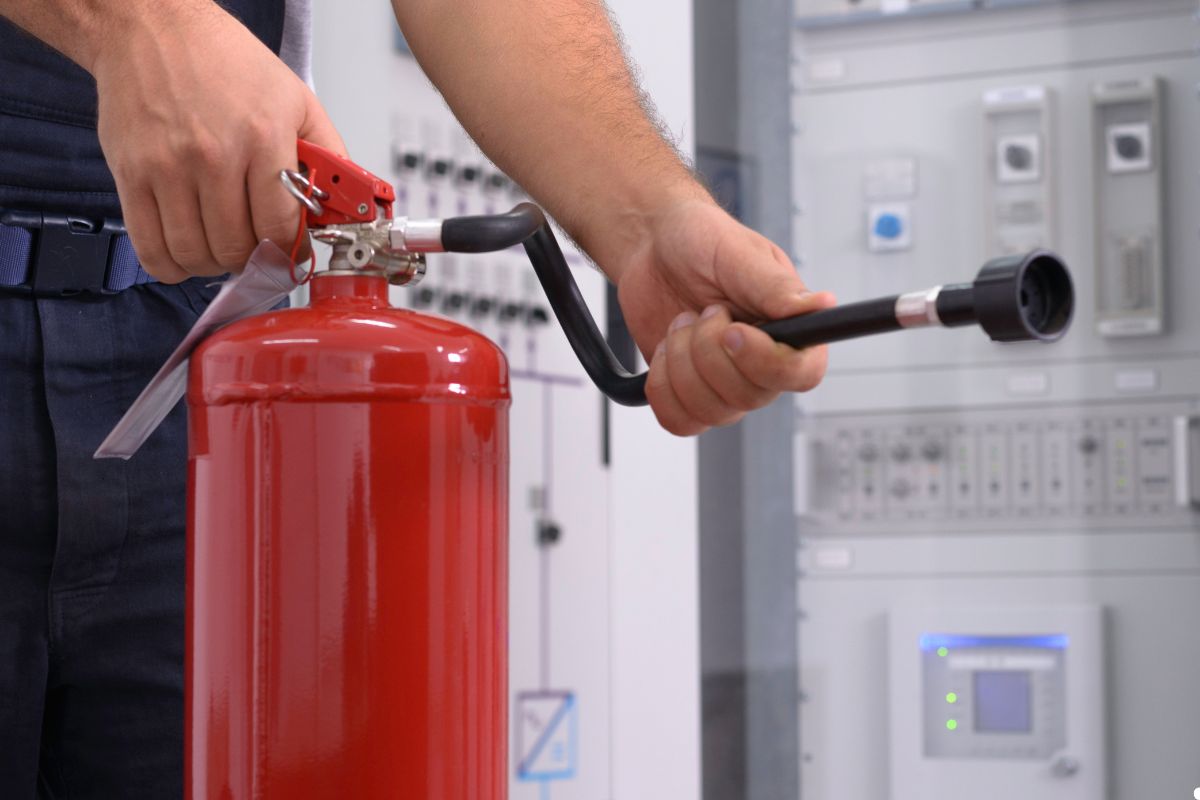
The Unseen Threat: Why Fire Safety Matters
Home fires are a devastating reality. Every year, countless families experience the trauma of losing their homes and belongings to fire. According to recent statistics, a significant portion of these fires could have been prevented or mitigated with proper fire safety measures. Fire can spread rapidly, leaving you with only minutes to react. Having the right equipment and a well-defined plan can make all the difference between a close call and a tragedy. Regular maintenance of your alarm systems ensures they remain effective when you need them most. This isn’t just about property; it’s about protecting your loved ones and ensuring their safety. Don’t underestimate the potential danger – be prepared.

Smoke Detectors: Your First Line of Defense
Smoke detectors are arguably the most crucial piece of fire safety equipment you can have in your home. These devices are designed to provide an early warning, giving you valuable time to escape a fire.
Types of Smoke Detectors
There are two main types of smoke detectors: ionization and photoelectric. Ionization smoke detectors are generally more responsive to fast-flaming fires, while photoelectric smoke detectors are more sensitive to slow, smoldering fires. It’s recommended to have both types or a dual-sensor smoke detector to provide the best protection.
Placement and Maintenance
Proper placement and maintenance are key to ensuring your smoke detectors function correctly. Install smoke detectors on every level of your home, inside and outside of bedrooms. Test your smoke detectors monthly and replace the batteries at least once a year, or according to the manufacturer’s instructions. Don’t disable your smoke detectors, even if they are prone to nuisance alarms.
The Importance of Carbon Monoxide Detectors
In addition to smoke detectors, it’s crucial to have carbon monoxide (CO) detectors in your home. Carbon monoxide is a colorless, odorless gas that can be deadly. CO detectors will alert you to the presence of this gas, giving you time to evacuate and seek medical attention.
Fire Extinguishers: Your First Response Tool
While smoke detectors provide early warning, fire extinguishers allow you to take immediate action to suppress a small fire before it spreads. Having the right type of fire extinguisher and knowing how to use it can prevent significant damage and potentially save lives.
Types of Fire Extinguishers (A, B, C, K)
Fire extinguishers are classified by the types of fires they are designed to extinguish:
- Class A: For ordinary combustibles like wood, paper, and cloth.
- Class B: For flammable liquids like gasoline, oil, and grease.
- Class C: For electrical fires.
- Class K: For kitchen fires involving cooking oils and fats.
It’s recommended to have a multi-purpose ABC fire extinguisher in your home. For the kitchen, a Class K extinguisher is specifically designed to handle cooking fires.
How to Use a Fire Extinguisher (PASS)
Remember the acronym PASS to use a fire extinguisher effectively:
- Pull the pin.
- Aim at the base of the fire.
- Squeeze the lever.
- Sweep from side to side.
Where to Keep Fire Extinguishers
Keep fire extinguishers in easily accessible locations, such as in the kitchen, garage, and near exits. Make sure everyone in your household knows where they are located and how to use them.
Escape Plans: When Every Second Counts
Even with smoke detectors and fire extinguishers, it’s essential to have a well-defined escape plan in case of a fire. Every second counts in a fire, and having a plan can help you and your family evacuate safely and quickly.
Creating a Home Escape Plan
Draw a map of your home, showing all doors and windows. Identify two escape routes from each room. Choose a meeting place outside the home where everyone can gather after evacuating. Make sure everyone in your household knows the escape plan.
Designating Meeting Points
Choose a meeting point that is a safe distance from your home, such as a neighbor’s house or a landmark. Make sure everyone knows the meeting point and understands that they should go there immediately after evacuating.
Practicing Fire Drills
Practice your fire escape plan at least twice a year. This will help everyone become familiar with the escape routes and meeting point. Time your drills to see how quickly you can evacuate.
Preventative Measures: Reducing Fire Hazards
Preventing fires in the first place is the best way to protect your home and family. By taking a few simple preventative measures, you can significantly reduce the risk of a fire.
Kitchen Safety
Never leave cooking unattended. Keep flammable materials away from the stovetop. Clean your stovetop and oven regularly to remove grease and food buildup.
Electrical Safety
Don’t overload electrical outlets. Check for frayed wires and damaged appliances. Use extension cords sparingly.
Heating Safety
Keep flammable materials away from heaters. Have your heating system inspected annually by a qualified professional.
Regular Inspections
Regularly inspect your home for potential fire hazards. Check smoke detectors, fire extinguishers, and electrical cords.
Local Fire Safety Resources in Long Beach
Long Beach offers several resources to help residents stay safe from fire.
Long Beach Fire Department
The Long Beach Fire Department provides a wealth of information on fire safety, including tips for preventing fires and creating escape plans. Fire departments are increasingly using automation in their operations, allowing for faster response times and more efficient resource management during emergencies.
Community Programs
The Long Beach Fire Department also offers community programs on fire safety. Check the LBFD website for information on upcoming events and workshops.
Educational Outreach
The LBFD is committed to educating the community about fire safety. Contact the department to request a fire safety presentation for your school, workplace, or community group.

Protecting Your Home and Loved Ones: A Proactive Approach
Fire safety is not a luxury; it’s a necessity. By investing in essential fire safety equipment, creating a well-defined escape plan, and taking preventative measures, you can significantly reduce the risk of a fire and protect your home and loved ones. Don’t wait until it’s too late. Take action today to safeguard your home from fire. Ensure your home is protected—invest in fire safety today! Contact us for expert guidance and top-quality fire safety solutions.
Frequently Asked Questions About Fire Safety
How often should I test my smoke detectors?
You should test your smoke detectors monthly.
What type of fire extinguisher should I have in my kitchen?
A Class K fire extinguisher is specifically designed for kitchen fires involving cooking oils and fats.
Where should my family meet in case of a fire?
Choose a meeting point that is a safe distance from your home, such as a neighbor’s house or a landmark. Make sure everyone knows the meeting point and understands that they should go there immediately after evacuating. If you need assistance, call us immediately.
